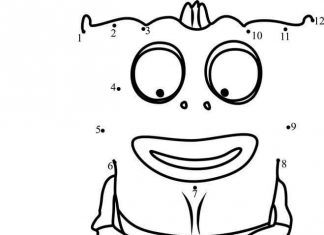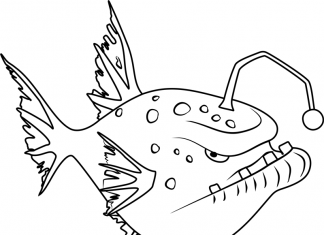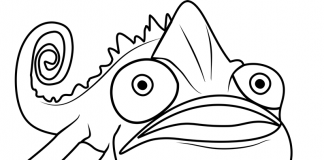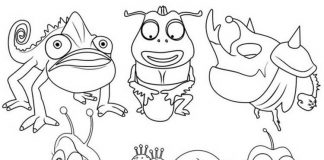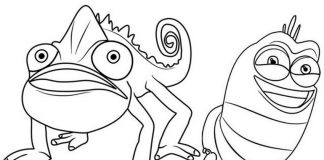Larva is the developmental stage of some insects and other invertebrates, in which the organisms assume a worm-like form.
Larva coloring books
Information
- Definition: A larva is a young, immature form of an insect or other invertebrate, after hatching from an egg and before reaching the adult form (imago). Larvae differ significantly from adults in appearance, behavior and function.
- Metamorphic changes: Larvae go through a process called metamorphosis, whereby they transform into adults. There are two main types of metamorphosis: incomplete (completed) and complete (holometabolic).
- Examples: Examples of larvae include butterfly caterpillars, mosquito larvae (also known as aquatic larvae), beetles (e.g., beetle larvae) and fly larvae (e.g., larvae of species in the family Syrphidae).
- Variety of shapes: The larvae of different species can have a variety of shapes and features, adapted to their environment and way of life. Some larvae live in water, others in soil, and still others are parasites.
- Nutrition: Larvae often have a different diet than adults. For example, caterpillars feed on plants, while their adult counterparts - butterflies - often drink nectar.
- Growth phase: The larval stage is a key stage in the growth and development of insects and other invertebrates. During this period, organisms focus on increasing size and gathering energy for future transformation.
- Duration: The period during which the organism remains in the larval stage can vary depending on the species and environmental conditions. The time can range from a few days to several years.
- Adaptations: Larvae often have unique adaptations that help them survive in a particular environment. For example, aquatic larvae have structures that allow them to breathe underwater, and parasitoid larvae are adapted to attach to their host.
- Protection from predators: Some larvae develop defensive strategies, such as warning colors or secreting poisonous substances to scare off potential predators.
- Ecological role: Larvae play important roles in the ecosystem, often as components of the food chain or processing organic matter in the soil or water.
Trivia
- Variety of shapes: Larvae can take on an extremely wide variety of shapes and forms, which are often adapted to their lifestyle and environment. Some are long and cylindrical, some are flattened, and some have elongated appendages.
- Larvae and fire: In some ecosystems, insect larvae become active after forest fires. This is an example of adaptation to ecosystems where fires are a natural occurrence.
- Variable nutrition: Insect larvae can have different feeding strategies. Some are predatory and hunt other insects, while others feed on plants or detritus.
- Larvae versus bird reproduction: Birds often use larvae as food for their chicks because of their high protein content. For some bird species, larvae are a key food source.
- Ecological role: Larvae play an important role in the ecosystem as elements of the food chain, processing dead organic matter and regulating insect populations.
- Parasitic larvae: There are larvae that have a parasitic lifestyle, parasitizing other organisms. An example is the larvae of flies from the tapeworm family, which feed on organisms that parasitize inside the bodies of other animals.
- Maggot senses: Larvae often have more limited sensory abilities than adults. For example, some mosquito larvae respond to ultraviolet light, which is invisible to the human eye.
- A complete metamorphosis: In insects with complete metamorphosis, such as butterflies and beetles, the larvae differ significantly from the adult form in appearance and function. They go through the pupa stage before reaching adulthood.
- Larvae as food for humans: In some cultures, insect larvae are eaten as a food source. They are rich in protein and provide essential nutrients.
- Larvae vs. research: The study of insect larvae is important in entomology, the scientific field that studies insects. Learning about their development, anatomy and behavior is important for understanding insect ecology and evolution.



